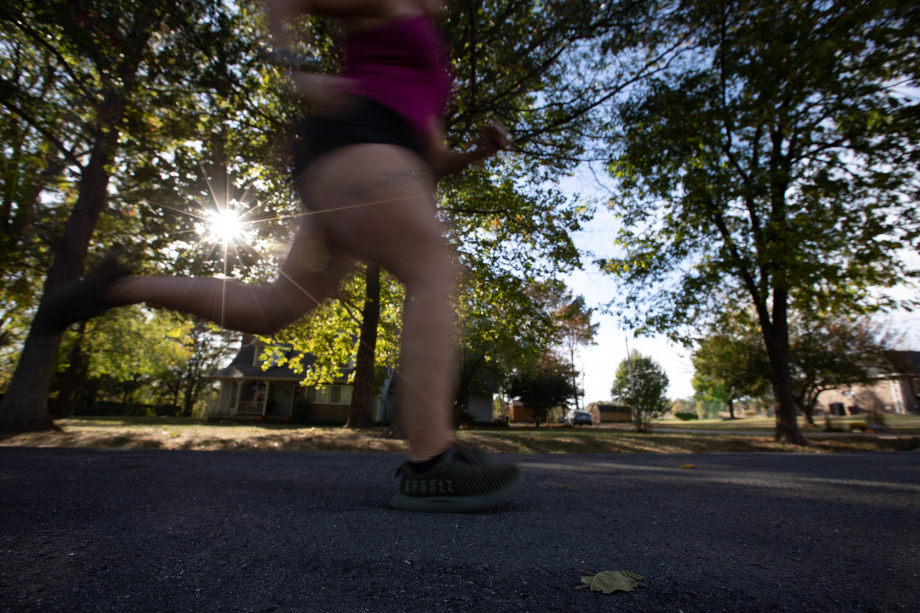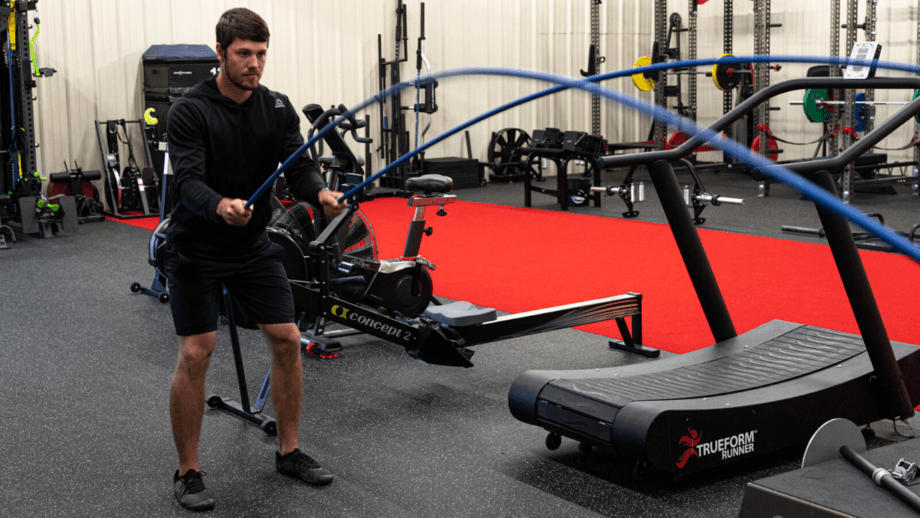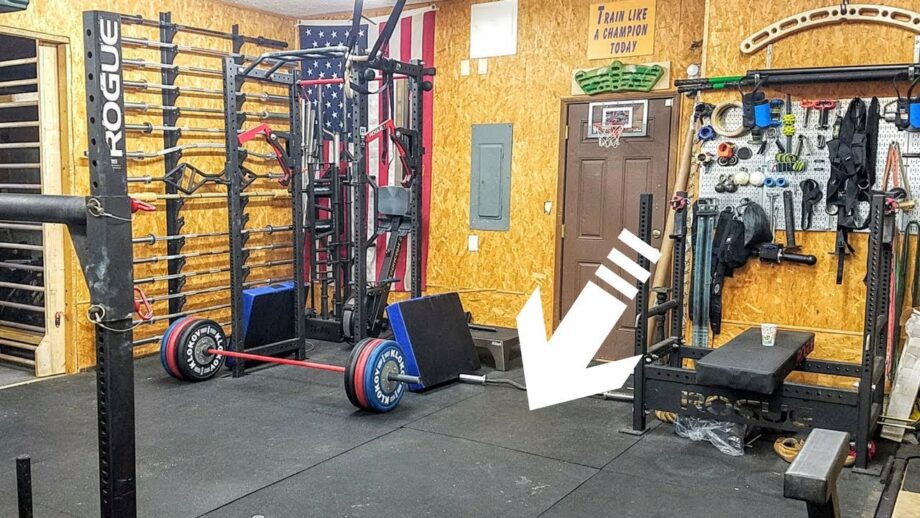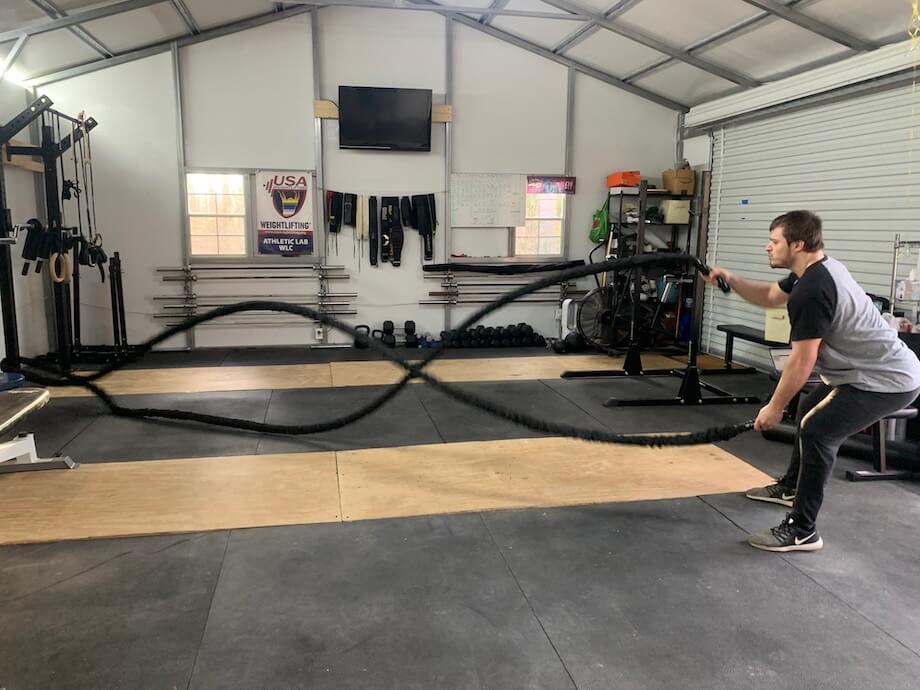You may think safety would be at the top of most runners’ list when running on the road, track, or in the neighborhood, but oftentimes, the simplest rules can be overlooked. If you’re a beginner you should become familiar with the basic tips for proper running etiquette to ensure your safety and the safety of others.
Even if you’re a seasoned runner, you may think you know all the rules, but it’s important to stay current and be aware. Proper running isn’t all about good running form—there are basic rules of the road that should be followed for leisurely running and different rules when racing or competing.
This article will outline some rules of the road for runners and cover race day etiquette so you feel comfortable and safe while exercising. We also asked Jacob Penner, member of the GGR expert panel, USAW weightlifting coach, and multiple-time all-state athlete in the 4x800m and 4x400m for his thoughts on running etiquette.
5 Safety Considerations for Running on the Road
When running on the road, it’s very important to use extra precaution. According to a 2021 study in the International Journal of Environmental Research and Public Health1, of 1,228 road runners surveyed, the biggest safety concerns were animals and dangerous road conditions. While we don’t have any tips for fighting off a bear or a coyote during your run, we do have five basic safety rules for runners so you can stay safe and prevent an accident.
Face Oncoming Traffic
The general rule of thumb is “bike with, run against”. This is related to traffic flow. So if you are biking on the road, ride with the flow of traffic. If you are running on the road, run against the flow of traffic. By running in the opposite direction, you can see oncoming traffic and avoid stepping out too far into the road, causing harm to yourself or a driver.
Run Single File
This is important if running in a group. You can run staggered or single file so you do not take up the whole sidewalk or roadside for other pedestrians. This ensures there is enough space for everyone and no one is forced to go around and step into oncoming traffic.
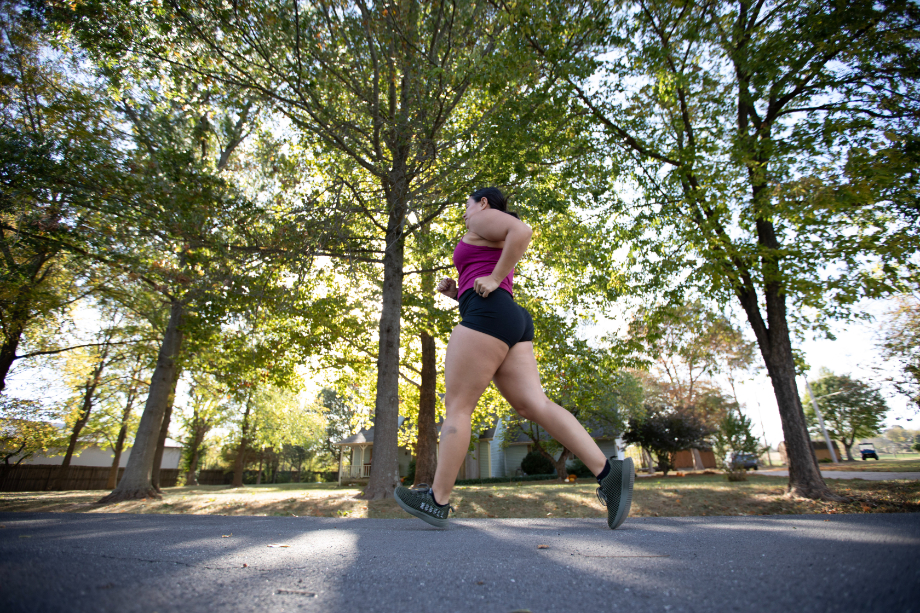
Avoid Loud Music
This can be a hard rule to follow. It is very common to listen to music to help pass the time and boost your drive while running. However, if possible, try to avoid using noise-canceling headphones, keep the volume down, or use one earbud so you are able to hear oncoming traffic and the rest of your surroundings, especially if you’re in an unfamiliar (or unsafe) neighborhood.
RELATED: Best Workout Playlists on Spotify
Use Crosswalks and Sidewalks
This is very important. Follow the rules of the road—if there’s a crosswalk, use it so you do not catch a driver off guard. Drivers should give you the right of way if you’re crossing the road in a designated area during an appropriate time, but be on guard regardless. Also, if possible, use the sidewalks in a neighborhood to avoid being on the side of the road.

Be Visible
You want to see and be seen. This goes hand-in-hand with running against the flow of traffic. If you are seen, then drivers and cyclists can make adjustments to give you a wide berth, or if you can see them, you can react to any sudden changes in their direction. Wear bright colors that stand out against the scenery around you and at night, wear reflectors. Additionally, Jacob Penner, NCSA, USAW-L2, CF-L1, suggests that you stay aware of your surroundings
6 Rules for Etiquette on Race Day
Whether it’s your first race or 20th, a 5k or a marathon, consider these basic rules for running etiquette for race day.
RELATED: Marathon Training Plan
Wear Your Assigned Number
In most races, you’re required to wear a bib number. This helps keep track of your placement, but also to make sure you are easily identified from the sidelines if you are running in a large group of racers.
Line Up in the Right Corral
It’s easy to get excited as the race is about to begin and slowly inch your way up to the start line. But remember, most races will group the fastest runners in the front. The lines are organized this way so there is less passing at the start of the race to limit run-ins with other people. This is also important because you want to keep your own pace and not try to keep up with faster runners, gassing yourself prematurely.
Signal When Passing
Use hand motions to signal if you need to pass someone. Sometimes, you may need to squeeze past a group where there is not much space. Signaling is helpful to the runners behind you so they do not get cut off, and it prevents collisions. A general rule to follow is slower runners stay in the inside lanes, and when passing, faster runners use the outside lanes.
Move To the Side to Slow Down or Stop
If you need to stop or slow down significantly from your pace, it’s important to move over. If you stop in the middle of the trail or road you could interrupt the flow of traffic and cause an accident. Even if it’s just to get something out of your shoe, it’s considerate to shift over so other runners can pass.

Do Not Drop Clothing or Trash
Look at the weather in advance and try to plan accordingly. Wear proper clothes and know your body temperature will rise as you keep running. If you wear an extra layer plan to tie it around your waist until post-race, or many races provide clothing donation sections you can toss clothes into as you pass.
RELATED: Tips for Running in the Rain
The same goes for trash. Don’t throw water bottles or food wrappers on the ground unless close to a refill station with a trash can. This helps prevent littering on private property and doesn’t disrupt the pace of fellow runners behind you.
Be Considerate of Fluid Disposal
Whether you’ve just stopped at a water station and are ditching a half-full cup of water, spitting out extra saliva, or even if you have to vomit, be considerate of those behind you. Step off to the side to safely dispose of water and other liquids so they don’t inadvertently come into contact with someone in your running path.
There are many more tips and tricks to keep in mind for race day as well:
- Don’t start race day with new shoes.
- Don’t change your diet (or regular running fuel) the day of the race.
- Make sure you run your own race.
Whether you’ve been training with a running coach and you have a goal in mind, or you signed up just for fun, keep your pace and walk when needed to get you to the finish line.
We asked Jacob Penner, NCSA, USAW-L2, CF-L1, for his do’s and don’ts for race day; he adds:
- DO make a plan for hydration/fueling if it’s a longer race
- DO fuel yourself in ways you have tried before training sessions
- DO go to the bathroom right before, even if you don’t think you need to
- DO make friends
- DO pack extra clothes for after
- DON’T try new recovery methods, warmups, or foods/drinks before the race
- DON’T change your running form the day of the race
- DON’T blame the event staff or your competitors for your performance
6 Rules for Running on a Track
Like many recreational activities, running on a track comes with many spoken (and unspoken) rules.
Run Counter-Clockwise
It may seem obvious, but the first rule of good etiquette while running is running in the right direction. Counter-clockwise—or to the right—is the standard for most track running. But, pay attention to signage that indicates otherwise; some tracks may alternate the preferred direction. When in doubt, follow suit with what everyone else on the track is doing. You don’t want to run against traffic.
Stay In Your Lane
As with traffic patterns on the freeway, the inside lanes are considered the “fast lanes” and should be treated as such. If you’re jogging or walking at a leisurely pace, stick to the middle or outermost lanes so that runners can easily pass you on the left. The last thing you want is a collision with a sprinter.
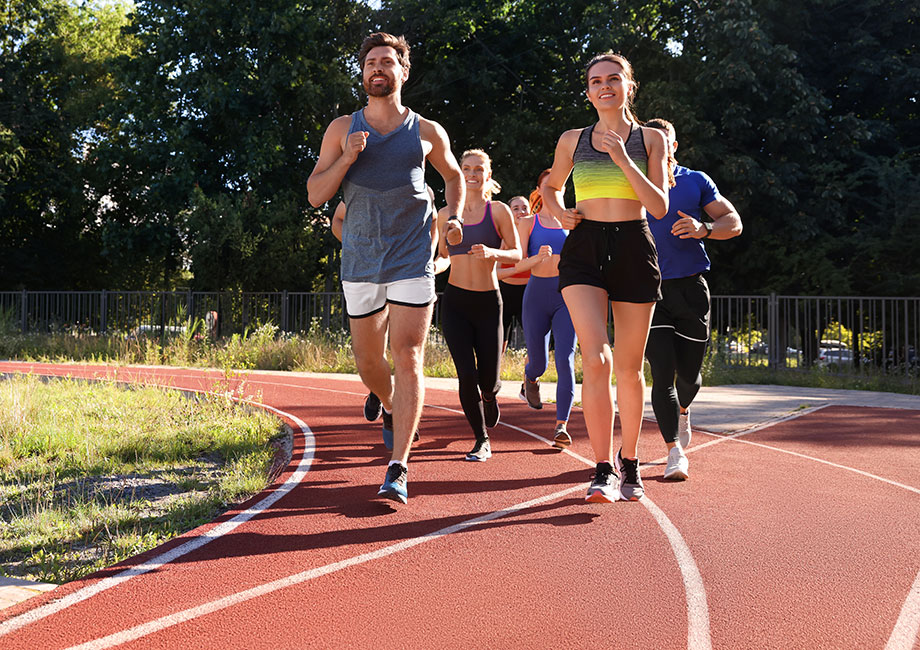
Don’t Be A Blocker
Similar to being mindful of your lane usage, also be mindful of the space you’re occupying. A track is meant for perpetual motion, and should you stop mid-lane—say, to adjust your music or check a notification on your phone—you run the risk of interrupting another runner’s cadence or (at worst) causing a collision. A lot of track runners will leave their headphones at home to avoid distractions. If you need to stop for any reason, then pull over and leave the track.
Be Courteous
If you participate in several outdoor activities, you’re probably familiar with the phrase “On your left” and instinctively know to step to the side. The same rule applies to the track. Be mindful of those that are passing you and vice versa.
Be Mindful of Hours of Use
If the track is on school grounds, you may be unable to access it during certain times of the day or after dark.
Know Your Standard Track Distances
| Distance (Meters) | Laps |
| 100m | 0; length of straight portion of track, shortest distance for sprint running |
| 200m | ½; half a lap |
| 400m | 1; about a quarter mile |
| 600m | 1 ½; 1 full lap followed by half a lap |
| 800m | 2; half a mile |
| 1200m | 3; ¾ of a mile |
| 1600m | 4; 1 mile |
Running Etiquette: Final Thoughts
Running etiquette is not just for race day. These rules apply to trail running and track running, full and half-marathon runners, and even casual runners. The best way to keep everyone safe on and off the road is to use common sense and common courtesy, and make sure everyone in the running community is educated about the basic rules of the road. Make sure you follow the rules, give the right away to the faster runner, use the proper lanes, and most of all, have fun!
Running Etiquette: FAQs
What are the basic rules of running?
Basic safety rules of running are to: always stay alert; wear bright colors; look both ways before crossing; never assume a motorist sees you; pass other runners on the left; and avoid making sudden turns in the road. Lastly, always run facing traffic so you are seen and you see cars coming.
What are some do and don’ts in running?
Some of the do’s when running are to know your pace—slower runners keep right, faster runners pass on the left. If running on a track, follow the posted direction and rules. Always run facing traffic so you see the oncoming traffic.
Some of the don’ts when running are to avoid private property, do not run in the middle of the road or make sudden turns, never relieve yourself in public, and if carrying anything, do not litter.
What are the six basic running techniques?
These six basic running techniques will help with proper form to prevent injury or strain when running: Take small strides, hold good posture, relax your shoulders and arms, minimize bouncing and twisting motions, focus on consistent breathing, and wear proper running clothes and gear.
“I just try to stay tall and relaxed through the arms, keep a consistent cadence, and strike the foot directly under the hip every step,” says Jacob Penner, NCSA, USAW-L2, CF-L1, and multiple-time all-state athlete in the 4x800m and 4x400m.
Why don’t runners run on the sidewalk?
This comes down to preference, but most runners forego the sidewalk because the cement is harsher on their joints than the asphalt of the road. That said, runners are still considered pedestrians and should use the sidewalk when possible to avoid traffic. Also—in our loudest parental voice—use the crosswalk!
Are you supposed to run on the left or right?
The short answer is the left side. You’ll want to run against traffic (the opposite of when you’re biking) so that you and the drivers will have a clearer view of one another.
References:
- Schuurman N, Rosenkrantz L, Lear SA. Environmental Preferences and Concerns of Recreational Road Runners. Int J Environ Res Public Health. 2021 Jun 10;18(12):6268. doi: 10.3390/ijerph18126268. PMID: 34200542; PMCID: PMC8296135.


